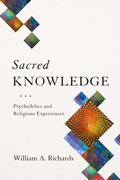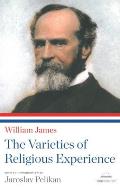
Profoundly sacred experiences that religious scholars call "revelatory" have been reported by our fellow human beings throughout recorded history, sometimes with fear and trembling, always with awe, humility, and respect, and often with subsequent changes in attitudes and behavior in the world. One finds attempts to describe them in words in the scriptures of all of the great world religions. Many have given up on trying to express the ineffable in human language and have produced paintings, poems, or musical compositions instead. One thinks of the Indian saint, Shankara; of the Greek mystics, Plato and Plotinus; of Moses and the burning bush; of Medieval monks and nuns like Meister Eckhart, St. John of the Cross, and St. Teresa of Avila; of St. Paul on the road to Damascus; of Al-Ghazali and Mohammad. Their words when recorded reflect the incredible variety and richness of the realms of religious experiences, yet at the same time often seem to magnificently resonate with one another, as if beyond all our beloved distinctions of cultures and traditions, there just might be what the theologian Paul Tillich called one "really real God."
Such incredible alternative states of human consciousness continue to occur. Often they simply happen with no warning, sometimes in the middle of the night. Some may view them as gifts of grace; others may fear they are becoming mentally ill and feel strongly ambivalent about trying to describe them to others. The psychologist Abraham Maslow called them "peak experiences," glimpses of "the further reaches of human nature," and found they were well known to highly creative people, such as Albert Einstein and Eleanor Roosevelt. They seem to be facilitated by sensory isolation in quiet, peaceful places or in conjunction with meditative disciplines and also by sensory overload as in rock concerts or symphony halls. Sometimes they occur in conjunction with intense physical stress, as in the "runner's high" or in the midst of natural childbirth. Sometimes they burst into awareness when one "loses one's self" while immersed in some form of creative expression.
| “Initial findings strongly support claims that visionary and mystical experiences often tend to be positively correlated with improved mental health and perhaps increased creativity.” |
Until this point in human history, such revelatory states of consciousness have been very elusive and difficult to study. Typically scholars of mysticism have settled into dark carrels in libraries and pondered ancient documents, often in their original languages. On the basis of recent studies at the Johns Hopkins School of Medicine and other universities that have employed psychedelic (i.e., "mind-manifesting") substances in responsible ways, we now know that potently profound experiences can be facilitated with a high degree of reliability with healthy human volunteers who have received medical screening and careful instruction on the art of navigating in internal worlds (see csp.org/psilocybin). So it is that current scholars are beginning to study the varieties of religious experiences and their impact on people's lives, whether interpreted as positive or negative. Social scientists are collecting data through interviews of volunteers in psychedelic research projects and people who know them well, along with the administration of various psychological tests and neuro-imaging procedures, before, during and after the occurrence of these incredible states of consciousness. Initial findings strongly support claims that visionary and mystical experiences often tend to be positively correlated with improved mental health and perhaps increased creativity.
Recently released by Columbia University Press, Sacred Knowledge attempts to survey our present knowledge on this frontier. It explores the promise of the responsible use of psychedelic substances in medicine, notably in the treatment of addictions and in palliative and perhaps hospice care. Initial findings, building on pioneer studies a few decades ago before psychedelic research became temporarily dormant in the Western world, document a connection between profoundly religious experiences during the action of psilocybin (the active ingredient in so-called "sacred mushrooms," valued by indigenous people for at least 5,000 years) and decreased depression, anxiety, interpersonal isolation, and fear of death in human volunteers who are coping with potentially terminal illnesses. But beyond the potential value of these substances in medical care, this new book also begins to explore their possible contributions to the lives of physically and mentally healthy people in terms of facilitating educational and religious knowledge.
At this point in the history of psychedelic research, there is no question that the responsible administration of these substances, long considered sacred in different cultures of our world, entails much more than simple ingestion of a drug. There are many varieties of "psychedelic experiences," insignificant and transformative, frightening and beautiful, potentially destructive or constructive. It is clear that the experiences reported are best viewed not as being "in the drug" but rather as "in the human mind." How one approaches the opportunity to explore other realms of human consciousness and the interpersonal grounding available during the period of drug action are known to be of critical importance. If one tries to consciously control an experience or attempts to avoid powerful feelings such as grief or guilt that may be encountered, panic, confusion, and paranoia may reliably be engendered, perhaps including a trip to a psychiatric emergency room. If, on the other hand, one is well prepared and enters alternative states of awareness with a high degree of trust, openness, courage, and a desire to grow personally and spiritually even if some suffering may occur during the journey, the states of consciousness encountered have a high probability of being life-enhancing.
There are some persons who may incur a high degree of risk through the use of psychedelic substances due to their unique psychological or physical conditions and might well be wisely counseled to nurture their personal growth through meditative procedures alone or other ways of facilitating self-actualization; however, once legal access to some of these sacred substances is established in culturally sanctioned ways, those who choose to use them may find their experiences of personal value. Many envision research and retreat centers in the not-too-distant future where those who desire this form of experience may receive medical screening, competent preparation, pure psychedelic substances in appropriate dosages, skilled guidance while alternative states of consciousness are being encountered, and support in the initial integration of the insights that occur. A parallel may be found in the hospice movement, which not long ago was one experimental clinic in London called "St. Christopher's" pioneered by Dr. Cicely Saunders; now hospice care is broadly based and accepted and covered by Medicare.
Profoundly sacred experiences, regardless of how they may be facilitated, clearly do not document sainthood. The challenge in their wake is to integrate their insights into everyday living in the world of time. The enlightened man in Buddhism "chops wood and carries water." In Isaiah, it is the "suffering servant" who expresses awareness of the divine in the world. Many who now have become disciplined meditators will acknowledge that their original interest in developing their spiritual lives was triggered or significantly enhanced by an experience with a psychedelic substance.
Sacred Knowledge was written to present the current status of research with psychedelic substances and to help to dispel some of the distorted understandings about these molecules that still echo from the sensationalistic press coverage and cultural conflicts of the 1960s. Even more profoundly, however, it attempts to acknowledge what William James in his classic 1902 book, The Varieties of Religious Experience, called the "noetic quality" of revelatory experiences. Such discoveries are more than emotion, more than "getting high"; for many they entail intuitive insights into the wondrous mysteries of our own being and the universe in which we discover ourselves. They take us to the very frontiers of science where, in places as mundane as departments of medicine, psychology, anthropology, religious studies, and perhaps physics, a dimension of human consciousness often called "sacred" increasingly is being encountered.
÷ ÷ ÷
William A. Richards is a clinical psychologist with formal training in theology and comparative religion at Johns Hopkins Bayview Medical Center. Earlier in his career, he pursued psychedelic research at the Spring Grove Hospital and Maryland Psychiatric Research Center in Baltimore. His graduate education included studies at Yale University, Brandeis University, Catholic University, the Andover-Newton Theological School, and the University of Göttingen.